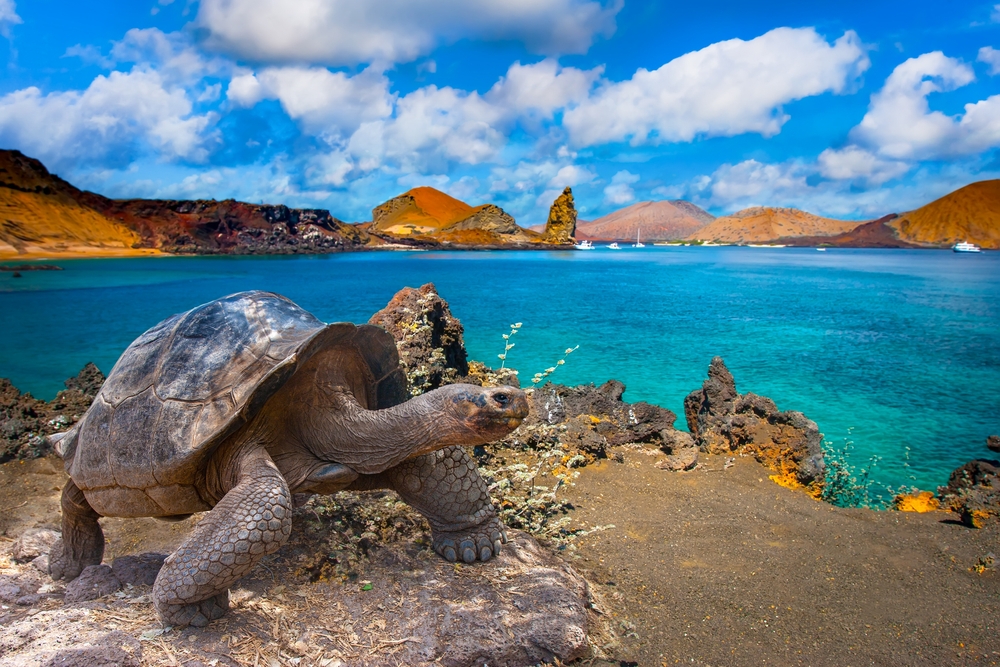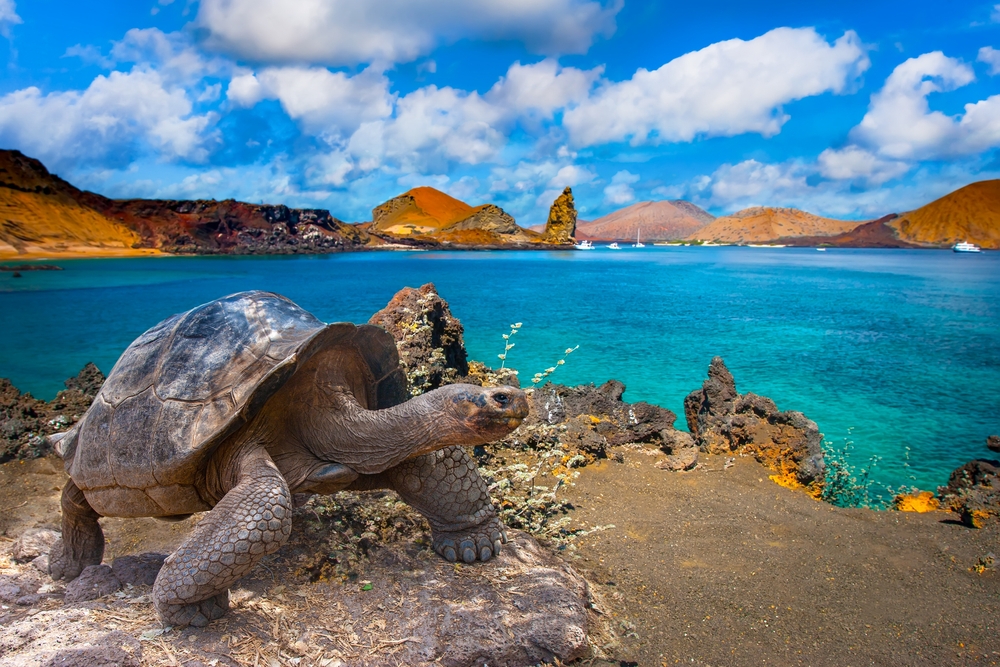
Like many famous men in history, Charles Darwin’s name is associated with many things that he has nothing to do with.
Exploring the Restricted Status of Darwin Island in the Galapagos
The great naturalist certainly never invented Darwin Awards. And he didn’t coin the phrase “natural selection.” So what exactly are we to make of his connection to Darwin Island? Did he even set foot on the Galapagos island that bears his name?
What did Charles Darwin do?
Darwin traveled to the Galapagos, of course. He remains the most famous scientist and historical figure ever to visit the remote archipelago. His experiences there as a young man in the 1830s would eventually inform his theory of evolution by natural selection, which he published in 1859. On the origin of speciesone of the greatest science books of all time.
This theory, which will be known as Darwinismchanged the way we think about the development of life on earth—including humanity—and it remains controversial in some circles to this day.
But Darwin didn’t go to the Galapagos to change the world or get his name on an island. In retrospect, his arrival there seems very fortunate both for himself and for science.
Young Charles Darwin
(Credit: Public Domain/Wikimedia Commons)
Long before he developed his theory of evolution, the young Charles Darwin, like so many of us in our 20s, was a bit of a slacker. He was the despair of his father, who worried that his helpless son would be a disgrace to the family name. Charles was pressured to become a doctor, but hated the sight of blood and so dropped out of medical school.
Although he was interested in other sciences—geology and botany were two particular passions—Darwin would eventually receive his degree from Cambridge University especially in theology. After graduating in 1831, the 22-year-old Darwin found himself aboard the HMS Beagle by the end of the same year.
Travel to the Galapagos Islands
(Credit: Public Domain/Wikimedia Commons)
Most stories record that Darwin was a naturalist on the survey ship, assigned to collect unusual specimens and generally make scientific observations. But it was also noted that what captain what was really wanted was a gentleman of equivalent social status to himself, and so they brought Darwin (who came from a well-known family) to keep him company. Darwin’s experience as a geologist and botanist was useful but perhaps somewhat accidental.
Either way, Darwin did his duty, joining the ship’s company for a circumnavigation that would see the crew explore the coast of South America for several years. But part of the research mission included a trip to the Galapagos Islands, which Beagle reached in 1835
Read more: The 10 Greatest Scientists of All Time
Where are the Galapagos Islands?
(Credit: FOTOGRIN/Shutterstock)
Even if Darwin never saw the place, Galapagos Islands rightfully deserve a place on any list of the most amazing destinations on Earth.
On their own merits and thanks to their unique ecosystems and plant and animal species that do not exist anywhere else, the islands were declared UNESCO A World Heritage Site in 1978, one of the first such places to earn this distinction.
What are the Galapagos Islands famous for?
Well, apart from the above, they are a remote group of volcanic islands, about 550 miles west of South America, part of what is now the Republic of Ecuador. The name itself comes from the variety of large turtles that live on the islands.
Galapagos derives from an old Iberian word that essentially means turtle, although the term was later used to describe a type of saddle that somewhat resembled tortoise shells. These turtles were ready food sources for early seafarers and were harvested from the islands so aggressively that today some of the turtle species that once lived there are extinct (or almost so) while others are endangered but they are recovering.
Read more: Galapagos tortoises are making a comeback
The islands are also home to many other plants and animals: penguins, marine iguanas and several species of birds, including those known as Darwin’s finches. These birds, whose beaks varied greatly in shape and function from island to island (as they adapted to suit their environment), would eventually help shape Darwin’s thinking as he formed his theory of evolution.
How many are the Galapagos Islands?
(Credit: Rene Holtslag/Shutterstock)
The actual number of islands in this remote location was probably a question the crew of Beagle when they finally arrived at the Galapagos in 1835. The ship spent five weeks exploring the archipelago and landed Darwin and other crew members on only four of the islands, but there are many more.
Today, UNESCO says that in total the Galapagos archipelago includes 127 islands, islets and rocks. Fewer than 20 are of significant size and only a handful are inhabited. When Darwin arrived, the islands were little more than a stopover for privateers, whalers and other sailing vessels, although at the time at least one island was penal colony.
Darwin’s work on the Galapagos Islands
During his relatively short visit to the islands, Darwin collected numerous plant and animal specimens, including his famous finches. When Beagle After pulling him out of his adventures, the ship continued to explore the northernmost reaches of the chain.
This includes two of the outermost islands: Wenham Island (or Wolf Islandas it is now known) and the different spelling Culpeper Island (named after a 17th-century English lord and naturalist). This particular island hardly deserved its name; most of it was underwater, just one square kilometer above the waves. However, it is notable for a natural rock arch that has been home to numerous birds.
Darwin Island
Darwin Island and the famous arch before it collapses in 2021 (Credit: HakBak/Shutterstock)
Ironically, Darwin never set foot on this island. None did, as the place offered no good places to land. As far as we know, the first recorded case of a human setting foot there was only in 1964, and that was with the help of a helicopter.
However, the waters around Darwin Island have long attracted a great deal of attention. This is because they teem with an abundance of marine life, including an incredible number hammerhead sharks. Today, the island ranks among underwater enthusiasts as one of the best diving spots in the world.
In the 1800s, however, this small rock was mostly known for being near good fishing waters and for its remarkable stone arch. This natural feature, as well as the entire island, would be named after its most famous almost visitor. But that would not happen for many years.
On the origin of species
Eventually, in 1836, Darwin returned to England and would never travel the world again. However, he shook the world when he eventually connected his experience to the theory he would publish more than 20 years later in On the origin of species. The book was an instant, if controversial, bestseller.
Darwin died in 1882, but by then his legacy as a great naturalist and thinker was secure. In fact, his name was so well known and his connection to the Galapagos so deep that British sailors and the still young Republic of Ecuador decided to honor him.
According to Galapagos Nature Reserve, the first names of the islands are usually famous English kings, statesmen and scientists. Ecuador later renamed the islands to better reflect the country’s language and history. However, some islands, including tiny Culpeper, renamed Darwin Island around 1892, were allowed to retain their anglicized names.
Read more: The 25 Greatest Science Books of All Time
Can you go to Darwin Island?
Today, Darwin Island remains a bucket list item destination for divers who want to see the rich marine life around its edges. For land-lovers, however, the allure of the insignificant place has always been repressed. Visitors are largely banned from the small island, although it remains a habitat for seabirds.
However, even as a visual attraction from a boat, nature itself seems to want to keep the island low profile. Erosion turned out to be the location’s main enemy, literally, when Darwin’s Arch collapsed in 2021, and since then the world as a whole hasn’t paid much attention to the little piece of earth. In this case, perhaps, once again, a kind of natural selection has prevailed.
Read more: 7 things you may not know about Charles Darwin

